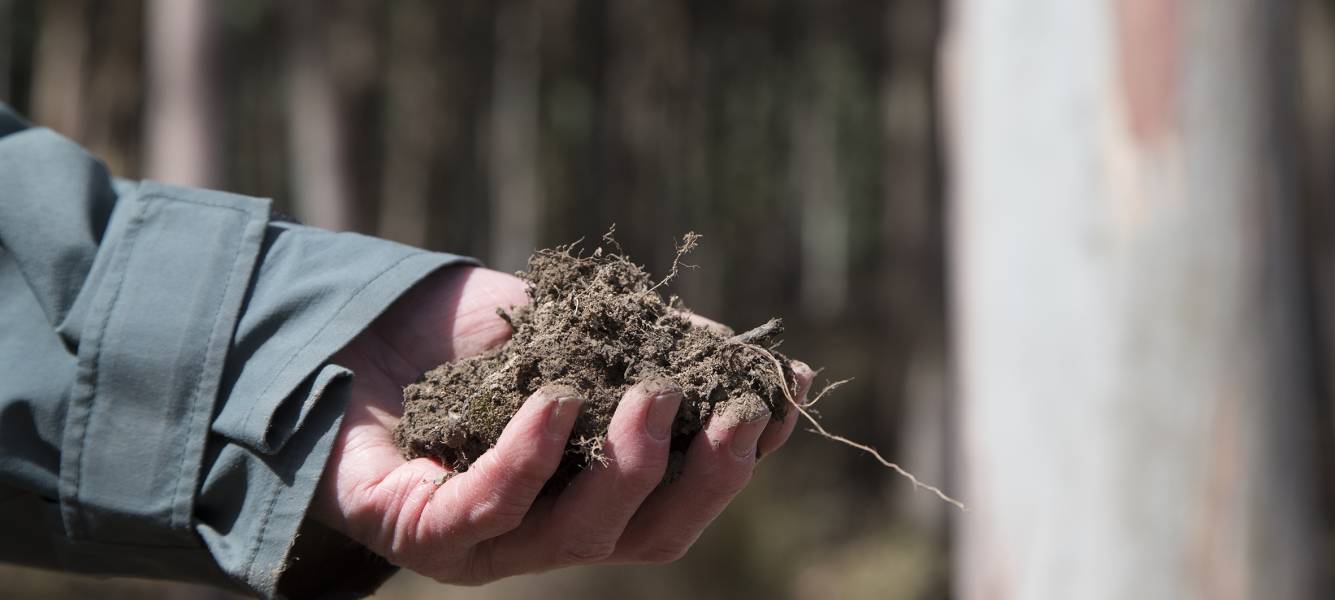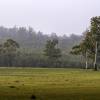
Tasmanian High Soil Carbon Landscapes project
Posted 20 October 2025
On-farm benefits Carbon benefits
Improving soil, climate, ecosystem and traditional knowledge
The Department of Natural Resources and Environment Tasmania (NRE) and Australian Department of Agriculture, Fisheries and Forestry (DAFF) have partnered on a $2.9 million project as part of the Partnering to Implement the National Soil Action Plan program.
The aim of the project is to improve understanding of Tasmania's carbon-rich soils across production and conservation landscapes through mapping, quantifying carbon content and identifying any threats to these valuable natural assets. The intended outcomes of the project will guide future land use decisions, inform climate change strategies and help Tasmanian farmers, landowners and communities plan for drought by identifying, protecting and rehabilitating high soil carbon areas on land they manage.
The project has commenced, and 25 sites across production and conservation areas around Tasmania will be assessed initially, with a target to have 200 sites assessed by 2028.
High soil carbon landscapes contain soils with levels of soil carbon greater than 12%. They are diverse areas and can present as peatlands on coastal plains, wetlands and alpine/subalpine highlands across various land tenures. Globally, these areas only make up 3% of total land but can store up to a third of the worlds soil carbon. Tasmania is recognised as having the largest proportion of organic soils in Australia.
Properly managing high soil carbon landscapes across Tasmania is important for climate change adaption, sustainable agriculture, healthy ecosystems and cultural heritage.
Share this Article
Latest Articles
-

04 November 2025
Prioritising outcomes for Tasmania's private forest growers in 2024-25
-

17 September 2025
Celebrating excellence at the Tasmanian Timber Awards
-

17 September 2025
Forest Practices Authority Research Update Day
Archives
- ActivAcre hits milestone, calls for more farmers to get on board
- Napier's leading the way in sustainable forestry and carbon-neutral farming
- Sound science needed to assess carbon impacts of timber harvesting
- Newly appointed TFFPN Board of Directors
- Graduate Certificate of Forestry Scholarship
- Forestry Australia Mentoring Program 2025
- Forest Industry Roundtable planning for the long term
- Eagle Management Constraint Period extended
- Successful private native forest management celebrated
- $15 million investment in new ship loader to boost Bell Bay's forestry exports
- Standing with Tasmania's forestry industry: buy local
- TFPA: Tasmanian Freight Equalisation Scheme needs a ground-up review
- AFCA Gala Dinner celebrates industry excellence
- Fire permits now required Statewide
- Forest leaders hone skills in sustainable native regrowth management
- Tasmanian forests and the carbon market: Barriers and opportunities
- What the 2024-25 Tasmanian Budget means for forestry
- Spring is the time for fuel reduction burning
- Primed for Growth: A situation analysis of the Tasmanian Forest and Wood Products Sector
- Audit requirements cut for low-risk plantation projects
- Guidance and support for landowners after damaging winds
- Forestry Australia welcomes further definition of active forest management
- Farm & Forest Mapper Tool highlighted at Rural Youth Tasmania's Young Farmer of the Year competition
- Senate Select Committee inquiry into the Tasmanian Freight Equalisation Scheme
- Timberlink announces new wood composite products brand
- Newly developed protocol a vital tool for safeguarding forestry industry
- Red Hot Tips: Fire management for Tassie farmers
- Bioenergy: Fuelling industries with trees
- Harvesting trees: What you need to know
- Shelterbelts: How are they contributing to farm systems?
- Infill plantings and remnant vegetation: Why biodiversity depends on a thriving understory
- Plantation planning: The key to a successful plantation
- Exciting interactive forestry knowledge hub launched
- $450,000 farm forestry grant recipients revealed


